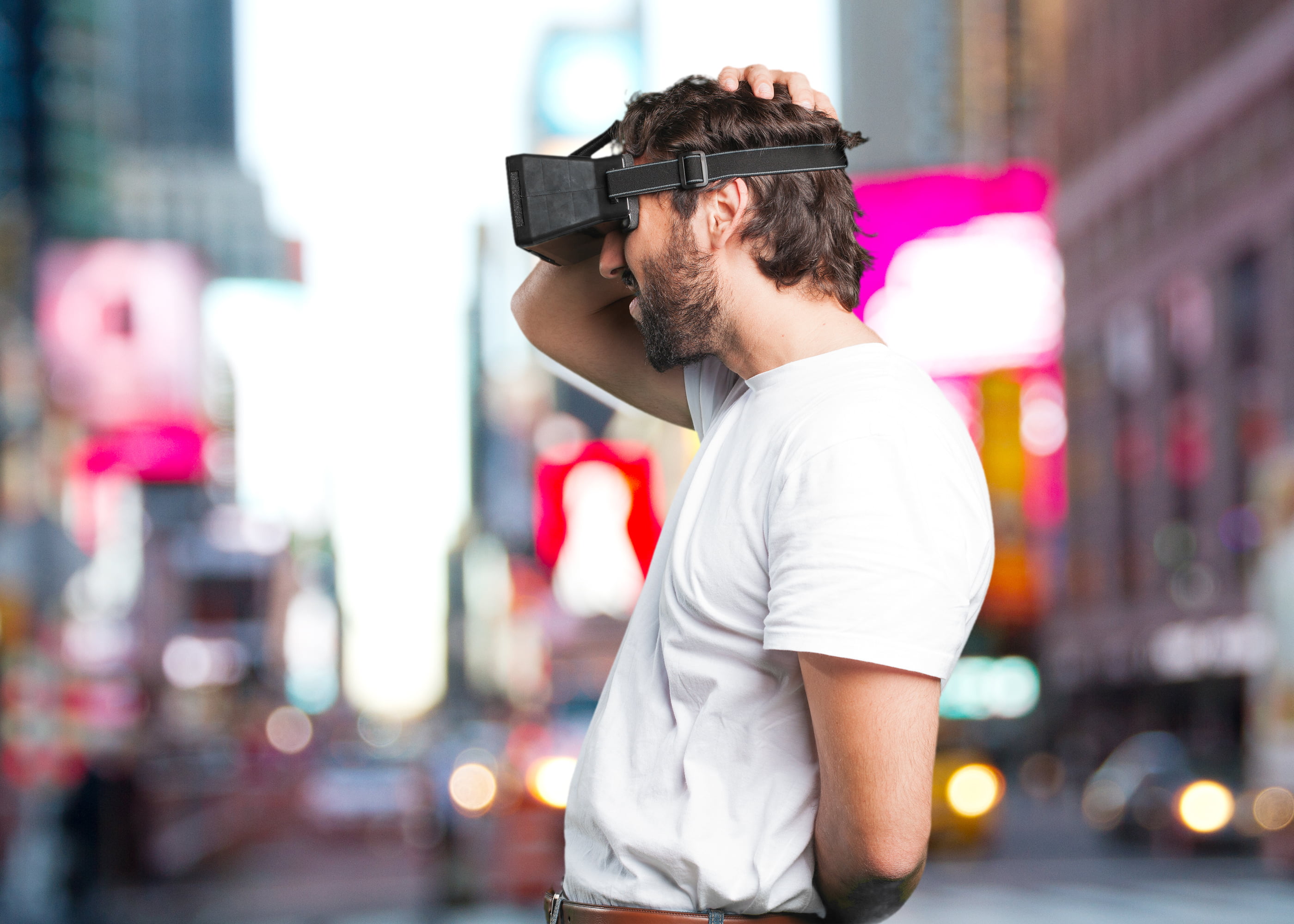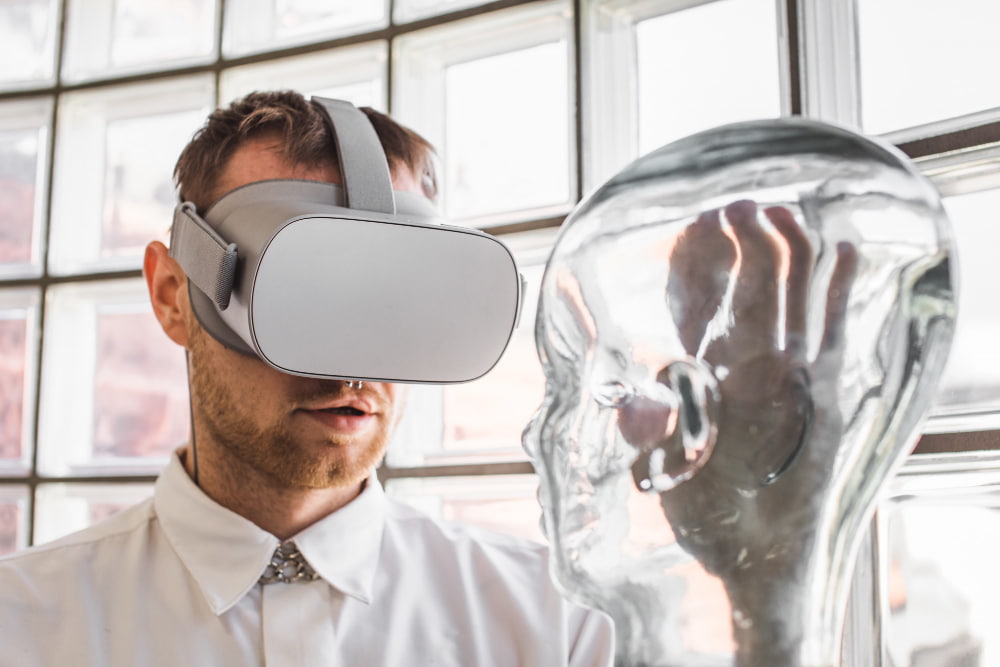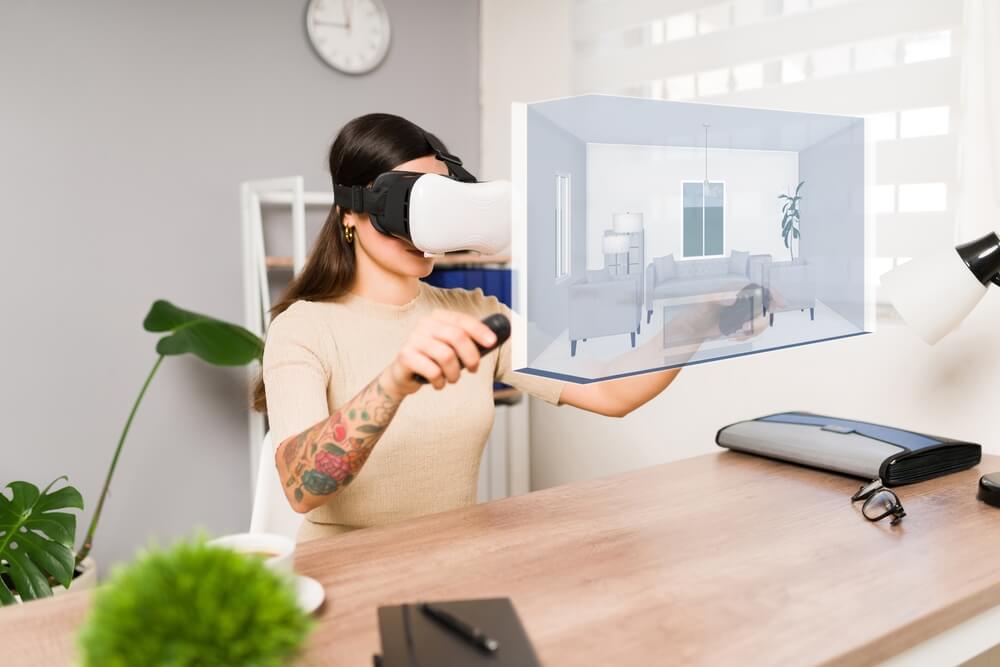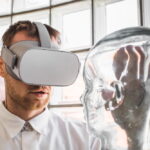All You Need to Know About Location-Based Augmented Reality
Table of Contents:
What is location-based augmented reality? It’s the AR technology that works purely based on the geolocation of the user. It does not need any physical markers to launch. Hence, it is often called markerless, position-based, geo-based, or geolocated AR. In this article, we shall explore this topic further – read on to find out!
What Is Location-Based AR?
What is location-based AR? We need to divide the definition into two parts.
- What is augmented reality? – It is a technology that combines real-world elements with virtual ones, typically through the registration of 3D, real objects and adding digital elements to it.
- What does location-based mean? – Something is required to trigger AR – it might be your tap on the phone or certain real objects and shapes. In location-based AR, it’s the location that prompts it.
We must note here that location AR does not require any physical markers to launch – it relies purely on the user’s geolocation. This is both similar and contrary to marker-based AR, which also could technically be assigned to particular locations yet would require the user to use their app on particular real-life markers.
How Does Location-Based AR Work?
Geolocated AR, though called markerless, actually uses markers. They are not physical but digital. This, in turn, enforces certain requirements on how this technology works.
For starters, the AR-based app needs to be capable of finding the markers and establishing the device’s position in relation to them. This requires the user to have a device with a GPS. Since such apps are typically created for smartphones, this is not a problem as long as the user turns the location on.
When the device’s location matches one of the interest points, the application starts displaying the additional virtual elements. These can be photos, animations, or even audio clips. To naturally weave it into reality (hence the term augmented reality), it works with the sensors and tools in your device – for example, the camera.
This mode of work requires geo AR apps and devices that they work on to be in an excellent symbiosis with each other. After all, if the markers are much more precise than the geolocating features of the device, it becomes much harder to connect the points of interest with the sensors; hence, the app might not work as intended.
Unlock the future with Mazer: Your innovation partner.
Geo AR: Applications
Knowing the basics of geolocated augmented reality, we might proceed with looking at several real-life applications of this technology. What industries is it used in, and what purpose does it serve? Here is a brief overview for you.
Gaming
The impact of location-based augmented reality on gaming could be seen a few years ago, namely in 2016. It was then that Pokemon GO was launched – a game based solely on geo AR.
If you are not familiar with this game, we can explain it in more detail. Like any Pokemon game, its pure aim was to catch Pokemon; however, what distinguishes it from other such games is that it encourages users to do it in real life. Wild Pokemon appeared in different real-life locations, so the players had to explore their neighborhoods to catch them – and they did it through an AR interface in their mobile apps.
Marketing
Naturally, a technology such as geo AR couldn’t go unnoticed by marketers and advertisers, who also found ways to utilize it in their campaigns. How does it work here?
Typically, it’s as simple as…displaying certain images that the marketers want the user to see in particular locations. Naturally, this can take many forms, such as, for instance, a treasure hunt in a city, or even the possibility to place a marker of your own with a certain item. For instance, this might be used to let users place markers for displays of furniture from a store; this way, the user can simulate what a particular setup will look like.
Real-Estate
In real estate, location-based augmented reality is utilized to make the lives of real estate agents easier. A marker is added to every property for rental or sale, and the agent does not have to memorize its price and specifics – they just need to take out their phone and check it in the app.
The Takeaway
Location-based AR is a technology that has proven itself useful in many cases, far more than the ones briefly presented in our article. Therefore, it is something that you should consider using in your own business. Knowing how it works, you can come up with your own conclusions on how to introduce it in your organization and begin to deploy it for your benefit.
You might also read: Real-Life Dangers Of Augmented Reality

Author: Rafał Siejca
Rafal has over twenty years of corporate experience, including roles at Millennium Bank, Comarch, and leading software teams at PZU, one of Europe’s largest insurance companies. As one of Poland’s few true VR experts with a decade of experience, he ensures timely, high-quality project delivery as CEO and CTO.










